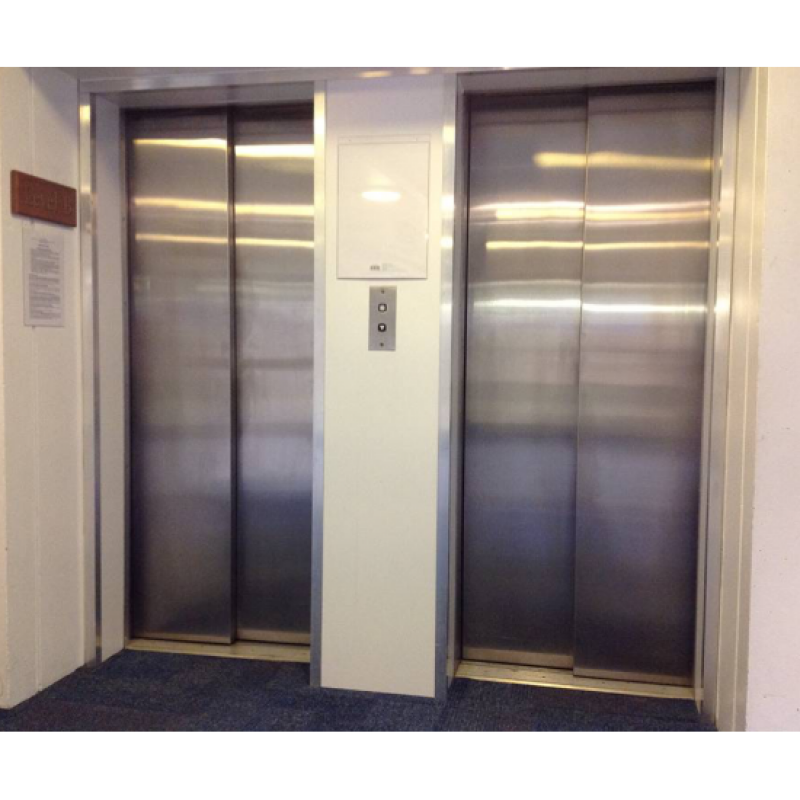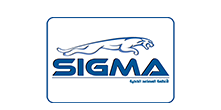
Login or create an account
CloseReturning Customer
I am a returning customer
Login or create an account
CloseRegister Account
If you already have an account with us, please login at the login form.
Your Account Has Been Created!
Thank you for registering with Egyptlifts!
You will be notified by e-mail once your account has been activated by the store owner.
If you have ANY questions about the operation of this online shop, please contact the store owner.
Account Logout
You have been logged off your account. It is now safe to leave the computer.
Your shopping cart has been saved, the items inside it will be restored whenever you log back into your account.
Automatic elevator doors

Automatic elevator doors
Automatic elevator doors are a crucial part of modern elevator design, playing an important role in providing safety and efficiency during vertical mobility in tall buildings. This innovative technology offers many advantages and benefits that we will address in this article.
The history of the development of automatic elevator doors
Automatic elevator door technology is an important innovation in the elevator industry and has evolved over the decades. In the early nineteenth century, doors were manually operated, with passengers and operators having to manually open and close doors manually. This approach required additional time and effort and was ineffective in terms of using time and improving the speed of entry and exit of passengers.
With the advancement of technology and innovation in the field of elevator design, automatic elevator doors began to appear in the market. In the 1920s, an automatic door system based on automated systems was developed to open and close automatically without passenger intervention. These automatic doors increased the speed of loading and unloading and made the use of elevators easier and safer..
Over time, automatic elevator door technology has evolved to include sensor systems, automatic control and smart technology. This development allowed to increase the efficiency of the doors and improve their performance in terms of safety and speed. Today, automatic elevator doors are an integral part of the modern elevator experience and contribute significantly to providing safe and efficient transportation in tall buildings and modern buildings..
Types of automatic elevator doors
The types of automatic elevator doors vary greatly, and are designed to meet different needs and uses. One of the most prominent of these types is the side sliding doors, which are the most common. These doors are open and closed sideways, and are ideal for lifts with a sided opening..
Then there are the folding doors, which open and close by folding, and are suitable for elevators that require additional space in front of them. Commonly used in small elevators and home elevators.
Alongside them come the circular turnstiles that open and close and are commonly used in high-rise elevators and luxury buildings. These doors add a touch of luxury to the elevator interior design.
Automatic elevator door technology has evolved to include transparent glass doors, which enhance the elevator experience by providing a beautiful visual view and natural lighting inside the elevator..
In short, the types of automatic elevator doors allow the elevator design to be adapted to the needs and use of the building, contributing to improved performance and aesthetics, and in providing a comfortable and efficient elevator user experience..
How do automatic elevator doors depend on sensing and control technology?
Sensing and control technology is one of the most important elements that distinguish automatic elevator doors and make them more effective and safe. These doors rely on a range of advanced devices and sensors to ensure safe and smooth opening and closing. This includes:
· Proximity sensors: These sensors are used to detect the presence of people or objects in the door area. When something is detected in the door path, the closing process is automatically suspended to prevent any collision.
· Software controllers: Elevator door control software processes information that comes from sensors and makes appropriate decisions. This software allows to adjust the speed of opening and closing and how long it takes for doors to stay open.
· Remote control systems: Modern technology enables building owners and elevator operators to control the doors of automatic elevators remotely, whether it is to pre-open the doors to receive passengers or to close them safely after passengers have entered..
· Obstacle detection systems: Some doors use obstruction detection technologies, such as infrared or lasers, to ensure that there is nothing in the path of the door before it is closed. If an obstruction is detected, the door is prevented from closing until it is removed.
These technologies are combined to make automatic elevator doors safer and more efficient, ensuring a comfortable and risk-free user experience for passengers and contributing to the prevention of accidents and injuries in the elevator environment..
Safety in the doors of automatic elevators
Safety is one of the most important factors to take into account when designing and operating automatic elevator doors. These doors play a crucial role in ensuring the safety of users and preventing accidents caused by their misuse or technical malfunctions..
First and foremost, automatic elevator doors rely on advanced sensor systems and multiple sensors to detect any obstacles that may be in the path of the door. If something is detected, whether it's someone or something else, the door automatically stops and reopens to prevent a collision.
Second, automatic elevator doors feature multiple locking mechanisms. When the door is closed, these mechanisms control its proper security to ensure that it is not accidentally opened while the elevator is moving. This prevents unauthorized access to the elevator corridor and protects users from any danger.
Third, automatic elevator doors are equipped with intelligent control systems that help avoid any technical problem that may affect the safety of the doors. These systems monitor the performance of the doors and indicate any operation or safety issues..
Overall, automatic elevator doors are a model of modern technology that combines elegance and safety. The great interest in making these doors strong and reliable is to provide a safe and comfortable elevator experience for everyone..
The Effect of Automatic Elevator Doors on Energy Efficiency
Automatic elevator doors play a crucial role in improving the energy efficiency of elevators. These doors offer several advantages that contribute to saving energy and reducing waste, considering the following points::
· Closing and opening intervals: Modern technology used in elevator doors adjusts the time intervals it takes for the door to close and open. Thanks to this precise control, door opening times can be reduced when there is no need, reducing heat leaks and loss of air conditioning in summer or warm air in winter..
· Maintaining the right temperature in the elevator: When the elevator doors are closed properly and effectively, the optimum temperature inside the elevator can be maintained. This means that air conditioners or heating systems do not overwork to compensate for excess air leaks, resulting in energy savings..
· Lighting control: Some automatic elevator door systems are synchronized with the lighting inside the elevator. When the doors are closed, the elevator lighting can be automatically reduced or completely off, contributing to energy savings.
· Reduce energy losses: Thanks to precise control of the opening and closing process, energy losses due to air leakage and electrical energy losses can be reduced.
In short, automatic elevator doors contribute to enhancing energy efficiency and reducing the cost of operating elevators, making them a sustainable and economical option in the contemporary environment that cares about saving energy and preserving the environment.
Automatic elevator door components
Automatic elevator doors consist of several main components that work together to achieve a smooth and safe opening and closing process. Here's an overview of these ingredients:
· Door panels: Door panels form the visible part of the door and are usually made of materials such as stainless steel or glass. They come in a variety of designs and colors to match the interior decoration of the elevator.
· Door Frames: Door ends form door structures and secure tightly around the elevator opening. They are usually made of steel and are strong and sustainable.
· Hinges: Hinges allow door movement during opening and closing. Hinges are mounted on panels and door ends to ensure a smooth and stable transition.
· Mechanical and Electrical Components: These components include door motors, locking systems, and electrical devices responsible for controlling the opening and closing of the door. These components are guided by electronic control units.
· Safety Sensors: Safety sensors detect the presence of people or obstacles in the door area. If anything is detected in the door path, the closing process automatically stops to prevent accidents and collisions.
· Smart Systems: These components include modern technology that allows more accurate and effective control of the door process, such as remote control systems and timing systems..
The components of the doors of automatic elevators rely on precise coordination and coordination to ensure a safe and effective opening and closing process. These components work together seamlessly to ensure users' safety and easy access to the elevator comfortably.
Maintenance of automatic elevator doors
Maintenance of automatic elevator doors is a crucial element to ensure the safety and effective performance of these doors. Door maintenance depends on adhering to a regular schedule and adopting periodic procedures for inspection and maintenance. Here are some of the reasons why these processes are so important.:
· Ensuring safety: Automatic elevator doors are a critical point in terms of user safety. Regular and regular maintenance ensures that hinges and mechanical components work properly and that sensor systems work efficiently to avoid any accidents.
· Cost savings: If maintained regularly, potential issues can be detected and fixed early, reducing significant repair costs in the future. Avoiding negligence in maintenance may lead to damage to elevator door parts and increase repair costs.
· Maintaining optimal performance: Door maintenance contributes to maintaining door performance at maximum efficiency. This includes adjusting lock systems, hinges and motors to ensure smooth and proper opening and closing.
· Extended service life: Good maintenance contributes to extending the service life of automatic elevator doors. By taking care of the doors and replacing the corroded parts in a timely manner, it can be avoided to replace the entire door costly later.
· Compliance with standards and regulations: Many authorities and regulators impose strict requirements on elevator door maintenance to ensure compliance with security standards. Maintenance commitment ensures that the elevator meets these requirements and has the necessary permit to operate.
In short, the maintenance of automatic elevator doors is a necessary investment to keep users safe and perform the elevator efficiently, avoid unexpected repair costs, and extend the service life of the elevator..
Automatic Door Fermator 70 cm landing-left - Stainless steel
$13.00
Automatic Door Fermator 70 cm landing-left - Stainless steel To purchase an external fermator door with a width of 70 cm and opening to the north and made of stainless steel and intended for use in the elevator, you can follow the following step..
text_instock
Automatic Door Fermator 70 cm landing-right -
$9.00
Automatic Door Fermator 70 cm landing-right - To purchase an external fermitor door with a width of 70 cm and a right opening, you can follow the following steps:Search online:Search online using appropriate search terms such as “Fermitor Extern..
text_instock
Automatic Door Fermator 70 cm landing-right - Stainless steel
$13.00
Automatic Door Fermator 70 cm landing-right - Stainless steel The 70cm wide exterior fermitor door made of stainless steel is a good choice for building elevators. This type of door is considered durable and can withstand environmental factors a..
text_instock
Automatic Door Fermator 80 cm landing-center-
$9.00
Automatic Door Fermator 80 cm landing-center- To purchase an external fermator door with a width of 80 cm and opens to the middle and is intended for use in the elevator, you can follow the following steps:Search online:Search online using..
text_instock
Automatic Door Fermator 80 cm landing-center- Stainless steel
$13.00
Automatic Door Fermator 80 cm landing-center- Stainless steel To purchase an external fermator door with a width of 80 cm and opening to the middle, made of stainless steel and intended for use in the elevator, you can follow the following steps..
text_instock
Automatic Door Fermator 80 cm landing-left -
$9.00
Automatic Door Fermator 80 cm landing-left - To purchase an external fermator door with a width of 80 cm and opens to the middle and is intended for use in the elevator, you can follow the following steps:Search online:Search online ..
text_instock
Automatic Door Fermator 80 cm landing-right - Stainless steel
$13.00
Automatic Door Fermator 80 cm landing-right - Stainless steel To purchase an external fermator door with a width of 80 cm, opening to the right, and made of stainless steel, you can follow the following steps:Search online:Search online using ap..
text_instock
Automatic Door Fermator External 100 cm Left
$18.00
Automatic Door Fermator External 100 cm Left To obtain an external fermator door with a width of 100 cm, opening to the north and including the leaf and throat, painted with Doco paint for use in the elevator, you can follow the following steps ..
text_instock
Automatic Door Fermator External 80 cm Left
$10.00
Automatic Door Fermator External 80 cm Left To purchase an external fermator door with a width of 80 cm, opening to the north, and including the leaf and throat, painted with Doco paint for use in the elevator, you can follow the following steps..
text_instock
Automatic Door HAS Folding 70/75
$9.00
Automatic Door HAS Folding 70/75 To purchase a 70/75 cm wide Haas Folding door for use in the elevator, you can follow the following steps:Search online:Search online using appropriate search terms such as “Haas Folding Door 70/75cm for Elevator..
text_instock
Automatic Door HAS Folding 80/85
$9.00
Automatic Door HAS Folding 80/85elevators elevator prices elevator company..
text_instock
Automatic Door SELCOM External 70 cm Center
$19.00
Automatic Door SELCOM External 70 cm Center Based on the information you provided, it appears that you are looking for a 70 cm wide Selcom door for outdoor use and in a center design. To purchase this type of door, you can follow the following s..
text_instock





















